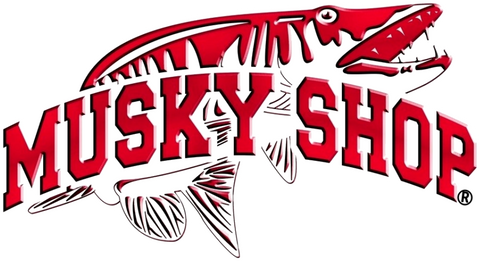Fall Transition and Lake Turnover EXPLAINED

The transition from Summer to Fall can be a confusing time in Musky Fishing especially in colder climates where the transition is quite dramatic. When the fall transition is taking place in the air and landscape around you, imagine the same is taking place subsurface. Fall brings cooler water temps, dying vegetation, lake turnover, and a whole host of changes for underwater habitats. This extreme change can be encompassed into our "Fall Transition".
During Fall transition, on the surface many things are taking place that will change the way you pattern for Musky Fishing. Blowing in from all directions are strong fronts that rock the daily temperatures, causing them to bounce wildly in the early days of transition. These fronts are slowly cooling the water surface temperature and clouds are blocking out the sun, eventually leading to the die off of our green summer vegetation as water plants let go of their stems and leaves to use their energy to protect their roots for next year's sprout.
During this same transitional period, the water of many of the larger lakes began going through "lake turnover". Turnover is the process of the colder denser water trading places with the warmer less dense water on the bottom of the lake. Lake turnover changes the habitat of our aquatic haunts that much more.

During all of these changes, there is only one constant to be sure of: muskies still want to eat! Because muskies are still hungry and packing on their winter weight, it's our job to catch them and here are some tips to help you find those transitional fish, when the water world has turned upside down.
Prior to making your trek to the lake, pay attention to the frontal patterns and winds. Wind direction can be the key to success. If 3 days of wind have been coming from the South, try fishing the North side of the lake, the water will be holding more bait from the constant push of oxygen and flow in that direction.
Early on in transition, try using baits that create a lot of commotion through the remaining dying weeds, making contact and stirring up a fuss. Muskies are likely hiding in the shallow weeds seeking the last of summer warmth and large groups of perch or pan fish feeding nearby. These muskies are eating in small windows, many times in the early morning hours, so don't miss prime strike conditions. Stir the water with rubber, big blades, or loud topwater to outwit the game. Remember, deeper fish are moving up during turnover as their habitat is changing so this is a good time to catch a huge trophy.
As turnover gets into full swing and the lake transition has stirred up dirty water and debris, you can move away from the weeds and fish the outer edge and structure. At this point, it's best to move into live bait and slower presentations. Slow presentations of large jerks and swim baits are the key for these tight fishing windows. Dissect inside turns and familiar structure at a slow and steady pace. Don't leave a good area until it's fished out when conditions are cold and fish are moving slow to conserve energy. Muskies will wait until the perfect moment as their metabolism is now slower and energy must be conserved. This is a great time to catch a monster.
Let's not forget, not all lakes turnover and there are many smaller lakes in the North that don't see such dramatic changes. So, remember that you are mobile and if you reach a lake with obvious signs of turnover with dirty water and new debris, maybe move to a smaller haunt so patterning will be a little easier and water a little clearer. Transition fishing is not for everyone and Onieda and Vilas counties have nearly 400 lakes to choose from.
For those who are willing to try their luck, put some of these tips under your hat for fall fishing. Maybe you can put a lunker in your net.
Musky fishing musky hunter musky shop musky lures musky on the fly musky fly fishing musky flies musky fever musky addict musky guide musky shop guide service muskie fishing muskie nation muskies Canada Northwoods Wisconsin muskies fishing guides fishing guide service fiske esox pike snoeken rods reels lures baits line leader net tackle box bass panfish Minocqua
